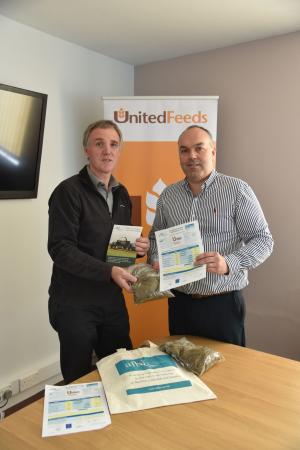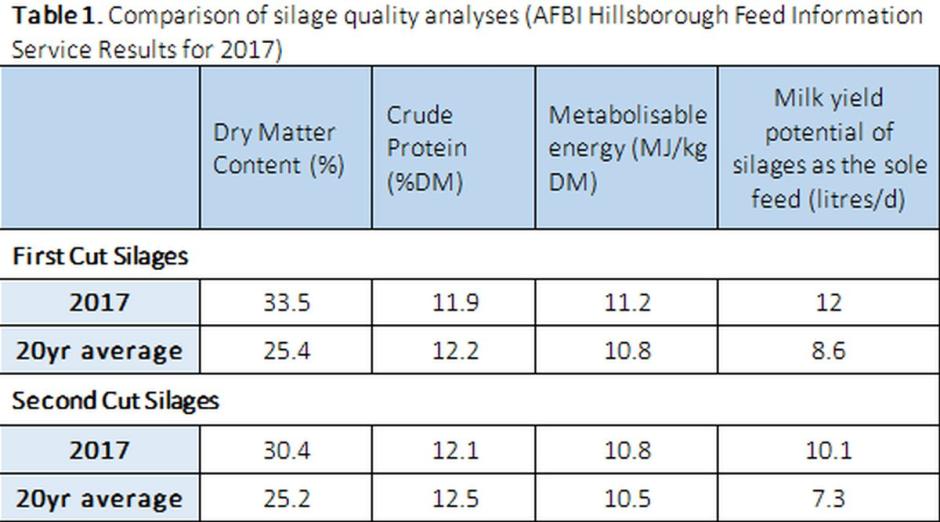AFBI’s Hillsborough Feeding Information Service Celebrates Twenty Years of Service to Northern Ireland Farmers
Date published:
Each year AFBI’s Hillsborough Feeding Information Service analyses thousands of silage samples and provides accurate and quality assured reports to farmers and the feed industry. This important information is used by farmers and their feed suppliers to make key decisions on winter feeding programmes which optimise productivity and profitability.

AFBI’s silage analysis service holds the highest possible international quality assurance standard (ISO17025) and is also the Master or reference Laboratory for the UK Forage Analytical Assurance (FAA) group. Overall, by using the AFBI service, farmers and industry are using the gold standard in forage analysis and can confidently rely upon the results when making important decisions on winter feeding options. This year, the Hillsborough Feeding Information Service celebrates twenty years of successfully delivering a quality service to cattle and sheep farmers and the wider agri-food industry.
United Feeds have used the service throughout this twenty year period and Ruminant Sales Adviser Clarence Calderwood comments ‘We have used the Hillsborough Forage Information Service forage testing service since its inception and find the information provided by the service to be consistently accurate. This information forms the foundation for United Feeds to be able to provide the most suitable nutritional advice for our farmer customers”.
New Reporting Service
Recently AFBI conducted an in depth consultation with customers across Northern Ireland and as a result, AFBI staff have developed an upgraded, user-friendly reporting format for forage analysis. The new HFIS report highlights the key quality results, including the dry matter, protein, digestibility and energy available within the silage. The Dairy Report shows the predicted silage intake potential which guides decisions on the level of concentrates needed to achieve a target milk yield. It is important to understand that optimising the utilisation of diets by cattle is highly influenced by the chemical composition and physical characteristics of the ration.
For those farmers, advisers and industry specialists, who want to further understand the feed potential of the silage, the new report now provides data on the fermentation quality, chemical component concentrations, dry matter and protein degradability parameters, plus European Feed and Feed into Milk Metabolisable parameters. This information will enable farmers and their feed company advisers to optimise the potential of grass forage in animal diets.
Excellent First Cut Silage in 2017
The evidence from analysis undertaken so far in 2017, shown in Table 1, is that first and second cut grass silages are of much higher quality than in previous years, with average first cut dry matter at 33.5% and second cut at 30.4% compared to the 20 year average of 25.4% for first cut and 25.2% for second cut. Furthermore the ME content of this year’s first cut silage at 11.2 MJ/kg DM is considerably higher than the twenty year average of 10.8 MJ/kg DM. This is reflected in a 3.4 litre/day increase in milk yield potential when fed as a sole feed (12.0 litres/day compared to 8.6 litres/day).

Similarly, for second cut silage ME content is 10.8 MJ/kg DM and this is reflected in a 2.8 litre/day increase in milk yield potential when fed as the sole feed (10.1 litres/day compared to 7.3 litres/day). However, there is concern about the dry matter and feeding value of third cut silage. So this year, it is very important to get all silages analysed and avoid unnecessary winter ration costs or reduced performance due to underfeeding. Overall it is essential to analyse your silage to save costs while still maintaining herd performance and by using the AFBI HFIS service you can be assured of using the gold standard in forage analysis.
Notes to editors:
AFBI carries out high quality technology research and development, statutory, analytical, and diagnostic testing functions for DAERA and other Government departments, public bodies and commercial companies.AFBI's Vision “Advancing the Local and Global Agri-Food Sectors Through Scientific Excellence”.All media enquiries to AFBI Press Office